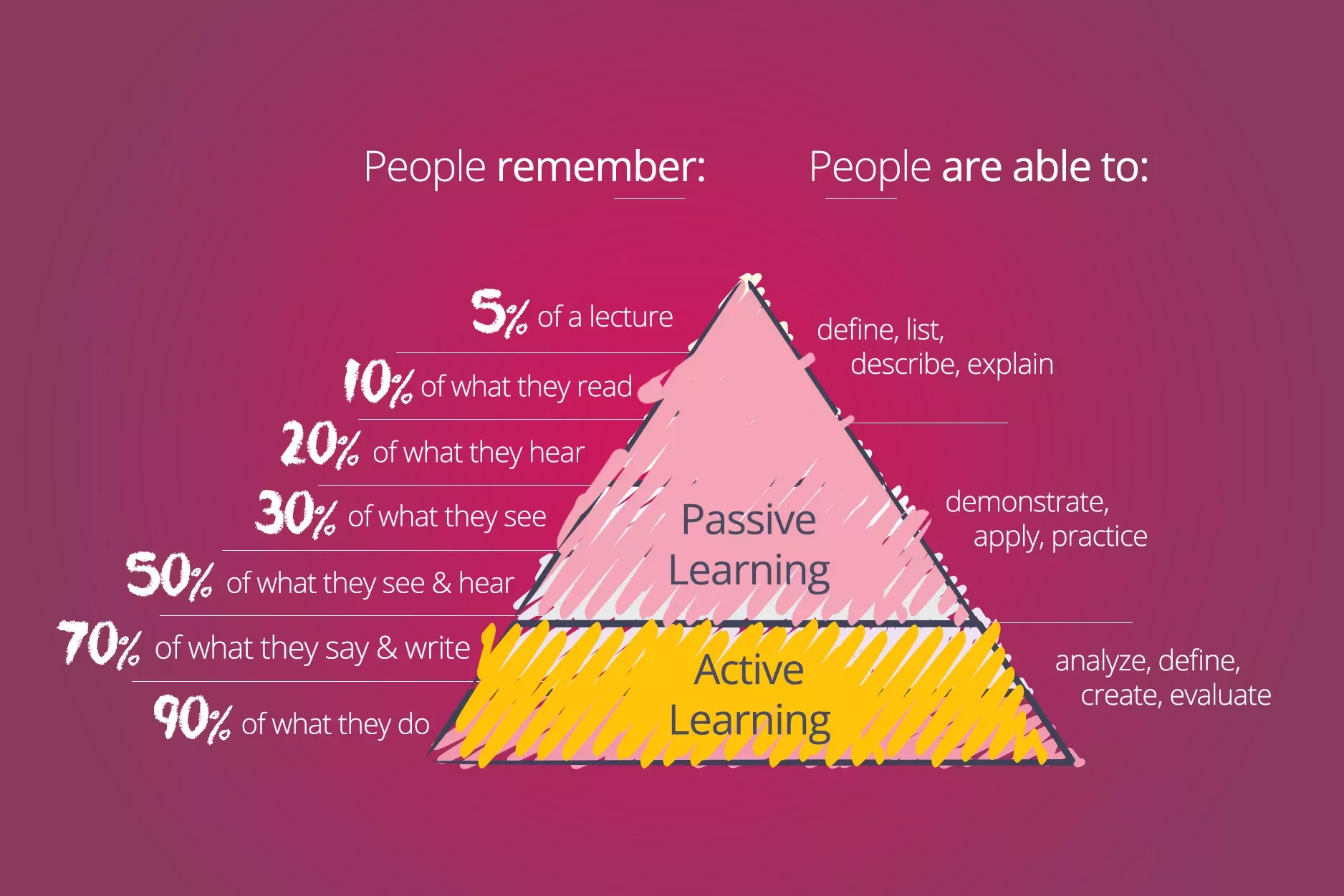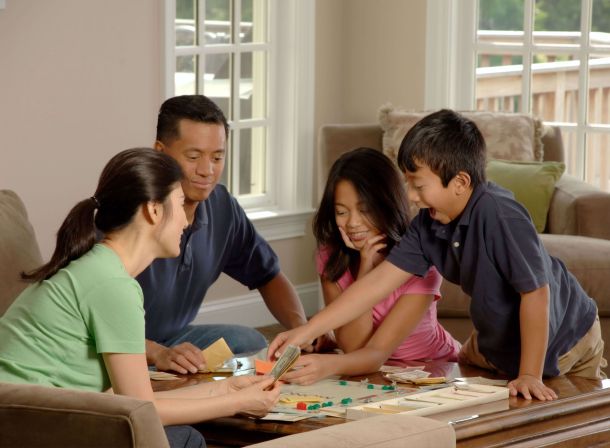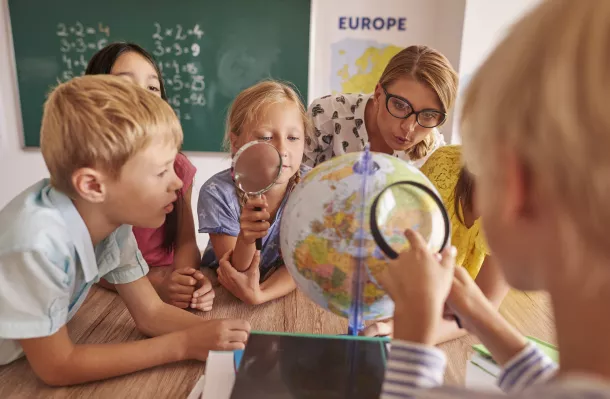
Active learning: discussions, games and collaborative projects
Active learning is about collaborative discussions, games, projects, and a learner that asks questions, is curious and shows interest.
Contents:
- Active learning: students take a dynamic role, participate and reflect on their own learning..
- A distinction between two instructional models
- 7 differences between active and passive learning
- Constructivism, the origin of active learning methods
Active learning: students take a dynamic role, participate and reflect on their own learning
Active learning is about collaborative discussions, games, and projects. When the learner actively participates in class, the quality of learning increases. New concepts and theories emerge from the exchange of ideas between all those involved, conclusions emerge naturally, and are more easily understood by the students.
Direct involvement in the educational process includes activities based on discussions, problem-solving, role-playing, and other interactive methods, and as a result, the learner demonstrates a higher level of engagement. This instructional strategy is about putting the learner at the center of the teaching process. However, the instructor/educator/teacher is still crucial in the classroom; guidance, feedback, and assessment remain essential elements for academic success. Students' performance improves significantly when they are actively involved.
We talk about an instructional strategy in which learners take a dynamic role, participate and reflect on their learning. Unlike passive learning, which consists of simply listening to a lecture, active learning includes short writing exercises, stimulating the articulation of a critical point of view, exercises presenting real-life situations, working individually, in pairs, or collaborative groups.
Learners are more likely to acquire skills when put in collaborative situations and stimulated to reflect. This model of teaching is more effective than traditional instruction because learners engage mentally with the task, and the experience supports the learner to interact with and reflect on a given topic.
Instruction is most effective when multiple neuronal pathways are stimulated at the same time; the more we can activate learners' brains in different ways, the more they develop.
Engaging as many of the sensory, cognitive, emotional, and social processes of students as possible will increase their learning potential, and this can be achieved through problem-solving activities; tactile stimulation; engaging visual processing; watching films; listening to audio clips, reading, role-playing, drawing, collaborative projects, etc. This model of teaching is about connecting new information with previous concrete events.
A distinction between two instructional models
The line between 'active' and 'passive' learning can be blurred. For motivating and guiding students towards learning we need more than a simple one-way transfer of information. Often, passive learning can be used as the foundation for a complex learning process, in which the learner is actively involved. If the learner reads materials without being stimulated to reflect, will only retain 10% of what has been covered. A presentation will help the learner to integrate the information, and then to define, explain and describe it. When the teacher's explanations are accompanied by visual support, the learner will be able to remember 50% of what is presented and apply it in practical contexts.
The child's success in analyzing and evaluating the content, but also in generating new ideas, depends on the variety of contexts that stimulate critical thinking. After reading, listening, and writing, the children must be placed in practical situations, only then the active learning process is complete and they will be able to retain 90% of what they have learned.
This model of direct engagement in the educational process has become an increasingly used concept in education. In active learning the child is completely involved in the process of accumulating information, developing skills, forming critical thinking and making connections between different areas.
7 differences between active and passive learning
While passive learning is teacher-oriented, active learning is learner-oriented, the mentor-learner relationship is not completely removed but is supported through a partnership.
- Active learning involves the direct involvement of students in the learning process, as opposed to passive learning, which is the model where students receive all the information from the teacher and have to listen to it.
- The methods used in active learning are more practical. Passive learning uses methods where learner involvement is relatively less;
- Active learning requires students to think, discuss, challenge themselves, and analyze information. Passive learning requires learners to absorb, assimilate, consider, and translate information;
- Active learning stimulates individual reflection, building on previous experiences. Passive learning provides new information without making additional connections;
- In active learning, responsibility for the learning process is taken by the learner. In passive learning, on the other hand, it is the teacher who takes responsibility for the learner's progress;
- In active learning, the teacher plays the role of a facilitator who creates an environment for the learner to acquire knowledge. In passive learning, teachers are seen as the primary source of knowledge;
- Active learning promotes divergent thinking, creative and unique ideas; In contrast, passive learning promotes convergent thinking.
Constructivism, the origin of active learning methods
Active learning has its origins in the theory called CONSTRUCTIVISM. The main pillars of this theory are centered on the idea that the learner is not "a vessel to be filled", but a partner in the learning process, being involved in the process of developing skills.
The constructivist theory emerged in the 1980s and 1990s and is based on the idea that learners are active participants in the learning process; knowledge is built on experience. Representatives of this theory were: Dewey, Piaget, Vygotsky, Gagne, and Bruner.
Active learning is centered on the learner and their needs to develop and emphasizes the importance of the process of forming meaningful connections between prior knowledge, new knowledge, and the processes involved in learning.
Here, in the form of an illustrated video, more information on active learning.
How Kinderpedia supports active learning and the transition to a modern classroom
Kinderpedia supports active learning by making it easy for teachers to provide students with a variety of interactive and engaging resources that encourage them to take an active role in their own learning. Also, it keeps parents connected and engaged in students’ education. It allows schools to gather and analyse data at different levels, with the purpose of improving learning, as well as the overall teaching practice.

Kinderpedia
The complete communication and management solution for schools and childcare centres.
Simplifies teachers' work and brings parents closer to their children's school progress.
Recommended articles
Want to improve your center quality? Kinderpedia is here to help! Not only do we provide thousands of informational content pieces like blog posts, podcasts, webinars and more, we are also makers of the #1 Rated and Reviewed Childcare Software.







